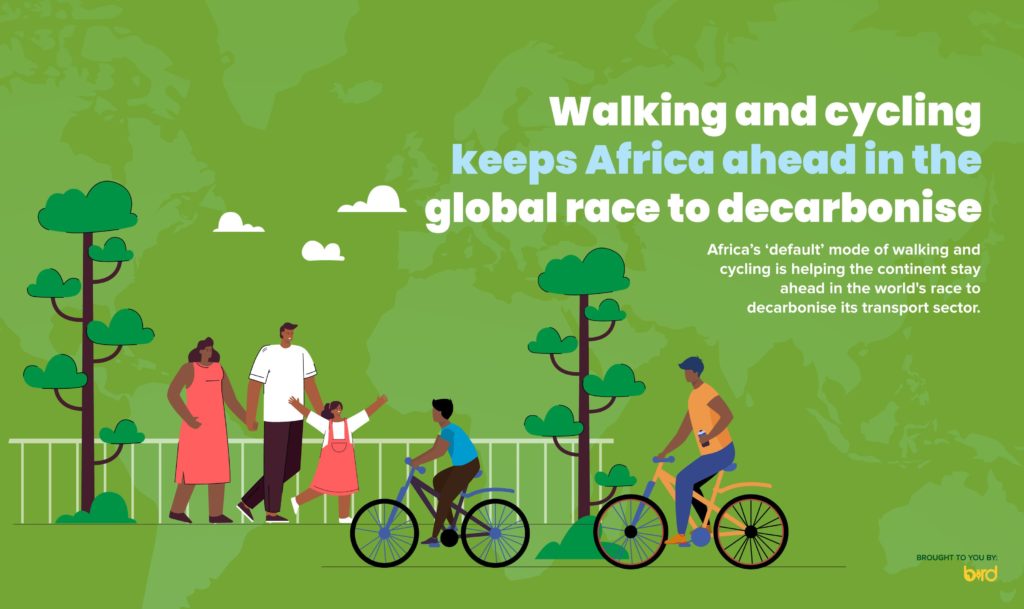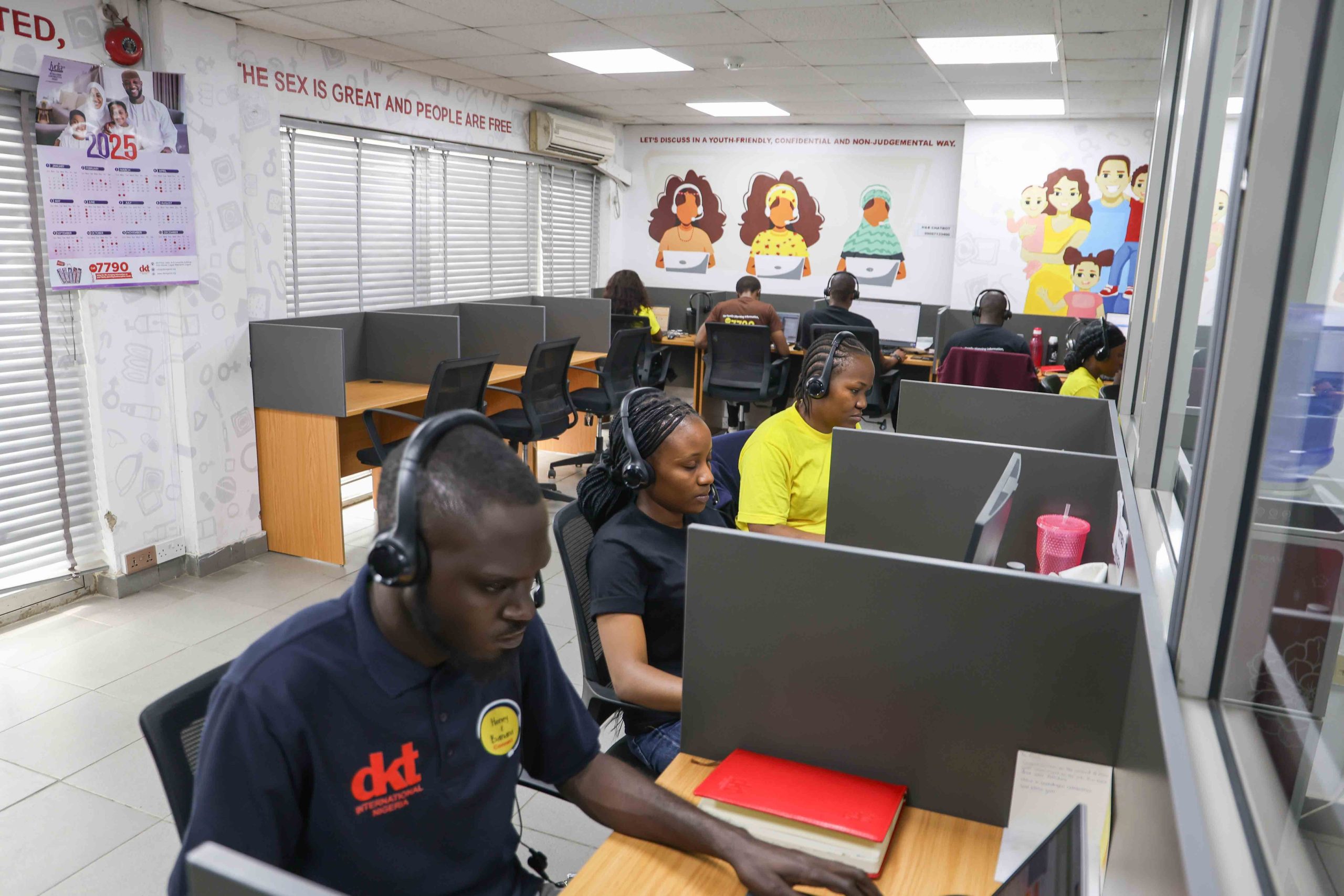For all those forced to walk or cycle to work or school every day, a new report highlighting the positive climactic impact will not bring much relief. But in the global race to decarbonise, the impact of the millions who walk, is huge. Now, how to keep these increasingly affluent commuters, “green”?
By Conrad Onyango, bird story agency

Africa’s ‘default’ mode of walking and cycling is helping the continent stay ahead in the world’s race to decarbonise its transport sector.
Only one in every three Africans benefits from motorised modes of transport daily, according to UN-Habitat, making it the region with the lowest access to public transport in the world. While that statistic – which is likely to change substantially as Africa’s economy develops – is a negative for those concerned, it is a huge positive for the world.
The United Nations Environmental Programme (UNEP) shows that up to 78 percent of people walk for travel every day to access healthcare, education, shops, jobs and transport, often because they have no other choice.
Two new reports view these as a blessing in disguise and are building a case for walking and cycling as the most affordable and sustainable transport modes.
A new report, Walking and Cycling in Africa – Evidence and Good Practice to Inspire Action calls for more focus and investments into non-motorised modes of transport to keep the impending rise in carbon emissions at bay as more cars enter Africa’s roads, thanks to rising incomes and urbanisation.
“In Africa, where there is an incredibly high modal share in walking and cycling, decarbonization of the transport sector means retaining and enabling people to move safely in their cities by foot or bicycle,” said UNEP Africa Office,Acting Director and Regional Representative Frank Turyatunga.
Up to one billion Africans spend 56 minutes walking or cycling for transport every day, generating the least noise and air pollution of any commuting population in the world, according to the report by UN Human Settlements Programme (UN-Habitat), the UN Environment Programme (UNEP), and the Walk21 Foundation.
However, governments need to act to support walking and cycling. While the continent accounts for just 3 percent of the world’s registered vehicles, it is home to 20 percent of global road traffic deaths. More than 260 000 people were killed on African roads in 2019. Of these 36 percent were pedestrians and 3 percent were cyclists. That makes African countries among the least safe places to walk and cycle in the world.
Walk21 Foundation Chief Executive Officer, Bronwen Thornton, said the continent’s leadership and policymakers need to start building better facilities to increase the value of – and people’s satisfaction with – walking and cycling.
“We can put walking and cycling at the heart of planning and investment for our streets and neighbourhoods. They are the solution to the multiple challenges we face and usually at lower costs than the alternatives,” she said.
The latest Climate Reality Barometer by Epson shows walking and cycling among actions that Africans in Kenya, South Africa, Morocco and Egypt are planning to embark on or are currently engaged in, to minimise the impact of climate change.
Of 26,205 people surveyed across 28 markets, 87.2 percent plan to embrace non-motorised transport and 31.8 percent have done so over the last 12 months.
Over the past year, 18.6 percent of those surveyed made a shift to renewable energy.
“We hope that the Barometer’s insights will help governments, industries and individuals to step up their efforts to avert climate disaster. While we know there is a long way to go, we believe we can build a better future if we work together and act now,” said Epson Global President, Yasunori Ogawa.
According to the Barometer, more than eight in 10 people (80.2%) cite having witnessed climate change in their daily lives as the most influential factor in building awareness.
“Planning for the long term and enabling people to take climate action now is the most powerful action countries can take to sustain climate optimism, reduce carbon pollution and build resilience to climate impacts,” said environmental scientist and Co-CEO of Change by Degrees, Tara Shine.
The authors of the Walking and cycling Africa report call for improved urban planning and design that focuses on how to bring people and places together, as many cities begin to accelerate a COVID-19-related expansion on walkways and bike lanes.
“There is a window of opportunity for change in the way we organize our transport systems,” said the United Nations Human Settlements Programme, Director for the Regional Office for Africa, Oumar Sylla, of the immediate post-COVD period when governments are still looking to enhance the wellness and resilience of their populations.
Among African cities that are already making progress are Addis Ababa – with a plan to build 1,000 km of pedestrian routes and cycling lanes – and Yaounde, which has strict plans around pedestrian access.
Kenya’s government has also committed to investing in walking and cycling infrastructure.
Zambia, Ghana and Senegal have Pedestrian Safety Action plans that promote investment in safer road crossings, wider footpaths and protected bike lanes, as well as shelter for pedestrians from weather, secure bike parking, lighting, and improved access to public transportation.




